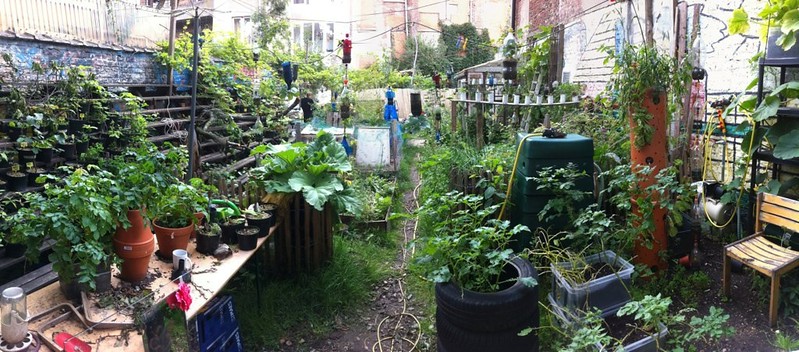Wastl
By nadine
Wastl is an experimental artistic project that focuses on models for vertical gardening, rooftop garden simulations and natural farming, while also being a meeting place for the exchange of ideas. What was formerly an urban wasteland now offers artists the opportunity to develop gardening projects within the city limits.
nadine's Wastl garden
The Wastl project began with the design, construction and testing of models for vertical gardening. In a second phase of this experiment, an irrigation system was installed and put to the test. Rainwater is caught in two large cubes and a pool. The water is automatically channeled to the plants through an arrangement of irrigation tubes. Examples of vertical constructions are the Domus Lagoenae, the closet, Pots on its side, Pallet walls, and the Potato Tower, among others.
All the structures built in the garden were made with recycled and used materials that were repurposed for their new environment. The greenhouse, for example, was built with old windows, wood, and bricks by the artist/architect Isabelle Pauwelyn. All plants and seeds used in the garden are organically-sourced, and the soil is a mixture of compost (borrowing from the compost heap of De Kriekelaar), lava substrate, and leftover soil from a construction site.
In collaboration with De Kriekelaar (the community centre next door to our project in Schaarbeek), we initiated gardening workshops for various audiences. But Wastl is not just a place for education: its main focus is artistic and cultural. nadine developed the garden especially as a residency space where artists who work on eco-artistic projects have an open space for reflection and development of green and fertile areas in the city.
Wastl has already hosted several projects – among others Christina Stadlbauer's Beehives, bartaku's Spiradye, Bernard Leroy's Brave Little Forest, Lina Kusaite's Plant Guild, Vlad Curcin's Eco Pesticide, and Franky DC's Alotment.
Emerging from nadine's collaborative network and the expertise we have developed through the urban green zone of Wastl, we are now extending and sharing our experiments and knowhow throughout Brussels. As this experimental artistic project and our research into greener cities advances, balconies, terraces, backyards, and parks will be the next playgrounds for Wastl.
